| We carried on north to Whitefish Point, the end of the
road. This is the northernmost lighthouse and the complex also houses a
shipwreck museum showing just how dangerous this coast and Lake Superior
are. The lake is the largest, coldest and deepest freshwater lake in the
world. Over 550 vessels have sunk in it. The deepest point is 1330ft. The
surface is 600ft above sea level. | 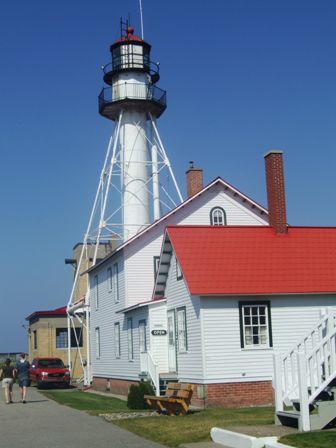 |
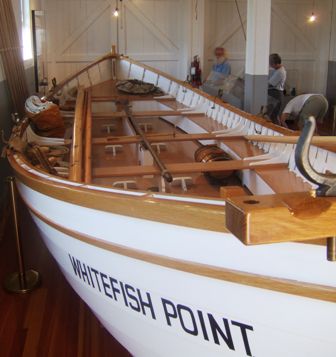 |
There were two surfboats stationed at the point and they had been
instrumental in saving many lives during the winter storms over the years. |
| The shipwreck museum is quite interesting, the first
display of two native Americans reminding us that they fished and travelled in
these waters long before the Europeans did. The first European here is thought to
have been Etienne Brulé in 1610. Later the
Hurons tortured, killed and ate him. | 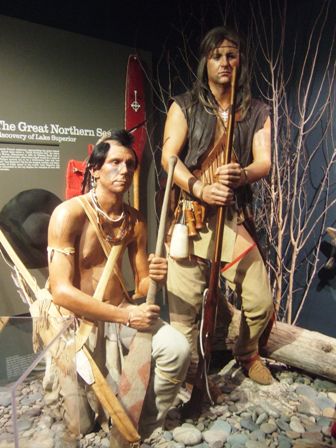 |
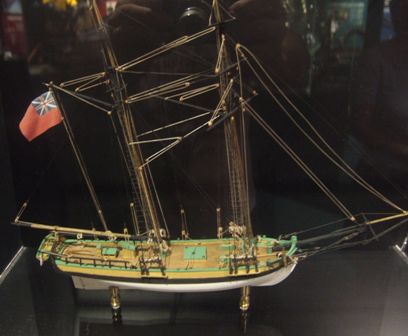 |
There are many models of the ships which have sunk in the lake and
particularly in this area. The first known shipwreck was of the 60ft 80 ton schooner
'Invincible', assembled at Sault Ste Marie in 1802, she foundered in 1816
while carrying an armed force to Fort William to suppress an uprising. The
crew made it ashore and eventually returned to Sault. |
| The 205ft 765 ton schooner 'Niagara' sank in Sept
1887 while being towed by the steamship 'Australasia' and overloaded with
iron ore. A ferocious storm blew up and when the towrope parted, the ship
sank 10 miles off the point. The crew of 10 were lost. She had been built in
1872 at Tonawanda. | 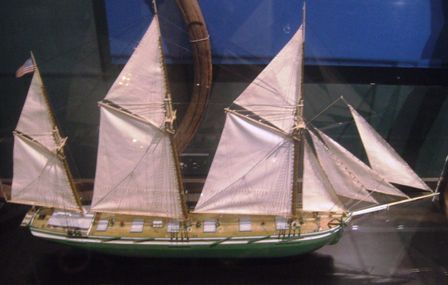 |
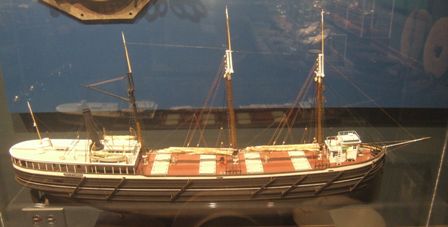 |
In 1884 the 178ft 686 ton steamer John M Osborn was hit by the steel hulled
passenger liner Alberta. She sank very quickly in 170ft water being loaded
with iron ore. Four lives were lost. She was the fourth ship in a month to
be struck and sunk by the Alberta whose captain travelled fast and thought other ships should get
out of its way because it carried Her Majesty's mails. |
| In 1882 the 180ft 1000ton Vienna closed on its sister
ship the Nipigon to exchange greetings. The two ships collided and the
Vienna sank despite efforts by the Nipigon to tow her to safety. The Vienna
sank an hour later in 140ft and is one of the most popular dive sites in the
lake. | 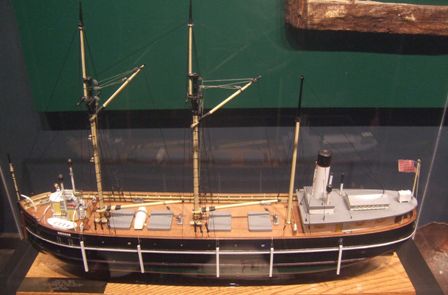 |
 |
Fog and speed sank the 420ft 4731 ton John B Cowle when she was hit
broadside on by the 524ft Scott in 1909. 14 crewmen were lost and 10 saved.
She sank in 215ft of water in less than three minutes. |
| This is a model of the 125ft White Shoal lighthouse
which is 20 miles west of the Straits of Mackinac and one of the coastguard
cutters which ferry people and supplies to the offshore lights. |  |
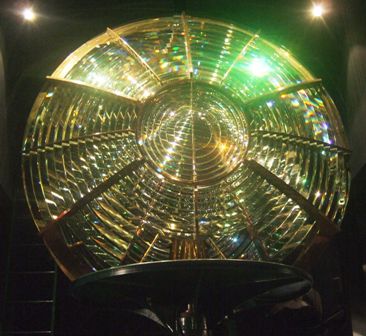 |
This is the 2nd order Fresnel lens from the White Shoal lighthouse. It is
9ft in diameter and is made up of 344 parts. Weighing 3500lb it floated on
liquid mercury which made its rotation virtually frictionless. It was visible
over 28 miles. It was replaced in 1983. |
| The first lights in 1849 used lamps designed by
Winslow Lewis. Fresnel lenses (vastly superior) were designed by Augustin
Fresnel in 1822 but were not used by the US for another 30 years because
Lewis was a personal friend of the then Superintendent of lighthouses. This is a fourth
order lens (there are seven). Oil was used for the lights until 1885 and
electricity wasn't used at Whitefish Point until the late 1930s. | 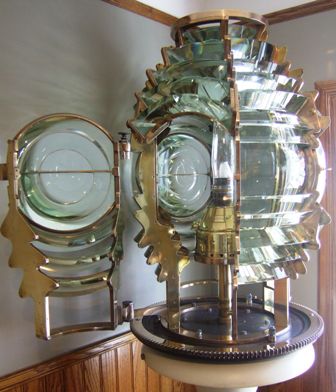 |
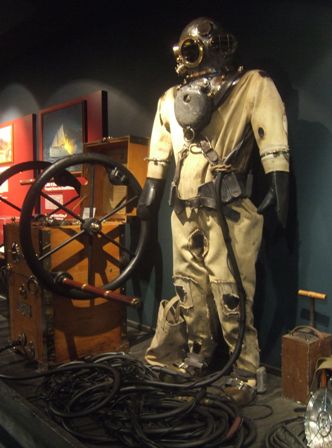 |
Divers would be sent down to the wrecks to investigate the causes. This is
an Andrew Morse suit from 1925. |
| This is a modern NEWTsuit used in the 1990s. It
enables the diver to go to depths of 1200ft for up to 54 hours. It uses CO2
scrubbers to purify the normal air used by the diver. It is fitted with propellers to
enable him to move about. It weighs 900lb and its hard shell construction
enables the internal pressure to be kept normal allowing a diver to ascend
without decompression pauses. | 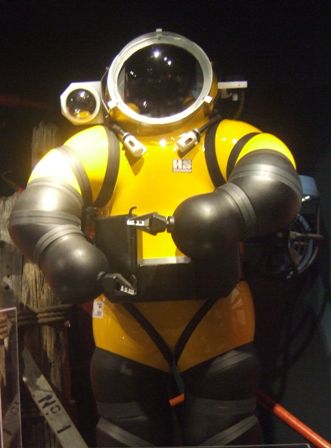 |
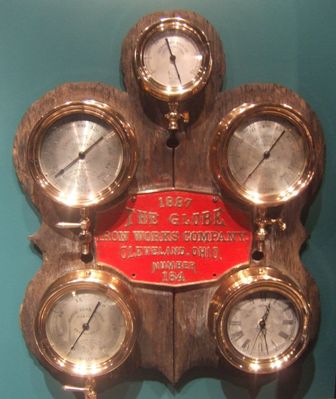 |
The instruments in a ship are always works of art. These were recovered from
the Samuel Mather which sank in 1891. |
| This is a lifelike model of Robert Carlson who was the light keeper at
Whitefish Point from 1903 to 1931. His wife kept the weather reporting
station for 22 years for $10 a month. They both came from Sweden and worked
at lighthouses in Wisconsin before moving to Michigan. They had three
children. |  |
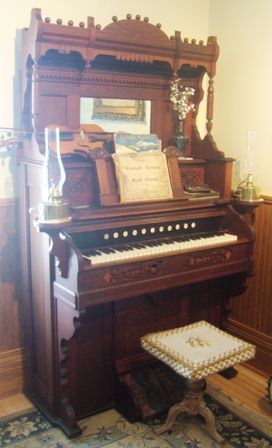 |
The families had to be self sufficient in most ways, including
entertainment.
The organ in the parlour is very typical of the instruments in homes in the
period. |
| The kitchen table has been set for tea by a mannequin of
their daughter, Cecelia. | 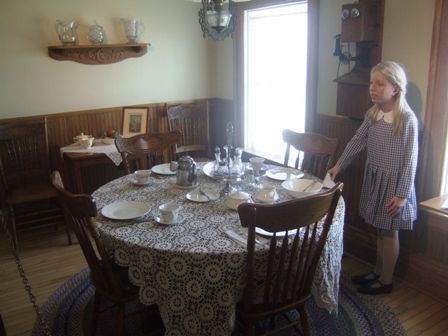 |
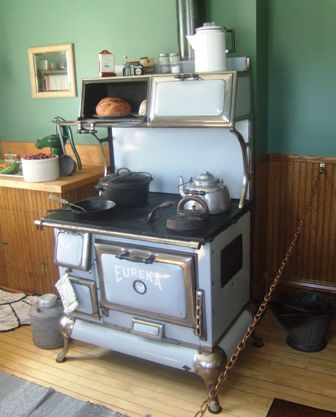 |
And the kitchen has its period equivalent of the Aga for cooking and keeping
warm. |
| Upstairs, the house was split in two halves. One was
occupied by the keeper and his family, and the other by his assistant and
his family. | 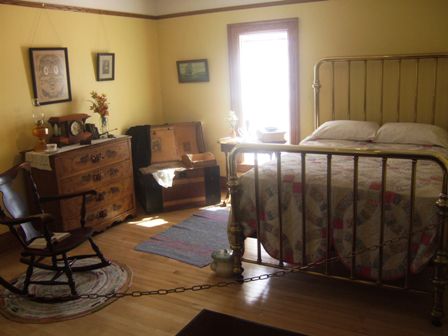 |
|